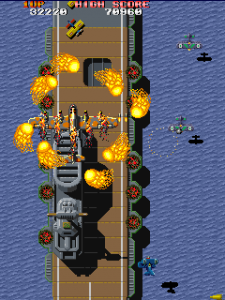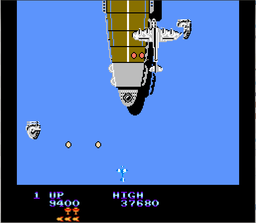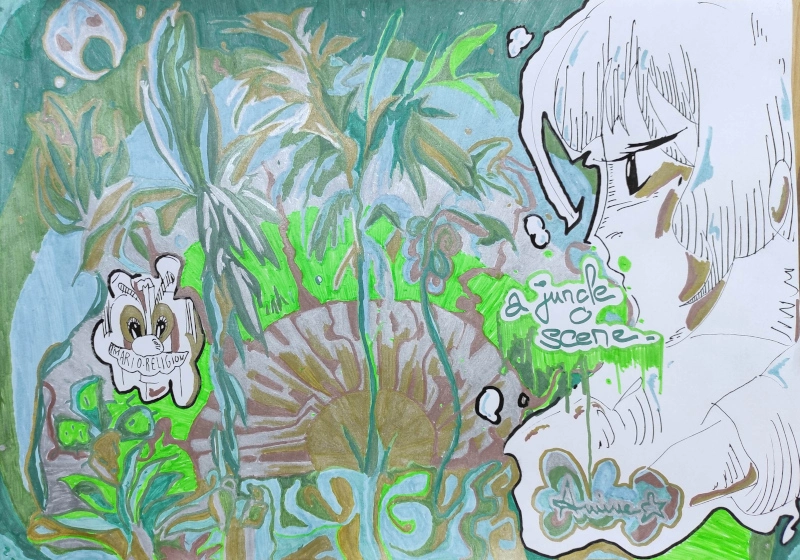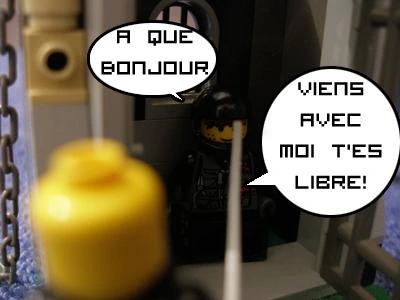
G O R I
-
Friends, more and more, it seems that people equate video game history and retro gaming with playing the Super Nintendo, even claiming that it is the best home console ever released, hosting the best games ever created.
First, let’s make something clear, there was something shameless in the Super Nintendo games marketing, that is, just add “Super” to a NES title, upgrade the graphics a little bit, and sell it for a full price. (Super Star Wars, Super Soccer, Super Metroid, Super Castlevania…) The console was even not so innovative except for the 16 bits graphics, but that is not the main subject.

There was often a machine like this for kids to wait at the restaurant, that was the good old times ! Second, we are forgetting that for more than a decade, video games were not played on home consoles, but on arcade booths and computers. For many people, video games meant standing up in a bar or restaurant hall, shooting down waves of WW2 planes with a Coke cup next to them.
In fact, home consoles, up until maybe the Saturn or even the Dreamcast, were always lagging behind arcade machines and, to a lesser extent, home computers.
Arcade machines had better graphic capacities, which meant much more beautiful games (compare Flying shark in 1987 on arcade machine, and the 1989 NES version) faster processors, which meant faster gameplay and more enemies on screen simultaneously (See Final fight in arcade, and then on the SNES), but also, and we forget this one nowadays, better sound chips which meant better music until the age of CD-ROM games in the late 90s !
Also let’s not forget that arcade machines cost less if you were a moderate player. A console was an expensive investment, and then you had to rent or buy games separately, whereas, if you played only occasionally, you could play arcade games for a few quarters on weekends with your friends.
Why am I saying all of this ? To remind you first of all that retro gaming was never limited to home consoles. I did not talk so much about the computer world, but many grew up playing Amstrad and its cassettes, or later the powerful Amiga with its custom chips !
Now in the Arcade world, Nintendo is only one player amongst others, not the most famous by the way. Capcom, Namco, Taito, SNK are way ahead in this regard. Even in terms of gameplay and innovation, Donkey Kong and Mario Brothers are not so special compared to Final Fight that perfected the beat em all genre, Darius and Ninja Warriors that used a triple screen display with mirrors to create visual effects, or RPG Arcade games like Magic Sword and Black Tiger.
But if we do talk about home consoles, we should not forget that the market is not limited to the USA.
For sure, there the NES was a smashing hit, followed by the SNES, but the rest of the world had it differently.
You should remember that Japan had the PC Engine, which is an impressive console with beautiful graphics (see Darius and Gradius on it, and how fast they run). You should also remember that in Brazil and Europe, the Sega MegaDrive (Genesis) had a big share of the market, and if we have an honest look at the game collection, the SEGA champion was objectively better.

The Mega Drive could display more enemies on screen, due to a better CPU. Yes, this might shock you, but the Super Nintendo was not the ultimate console. While it had superior graphics, the CPU was slower, and you can definitely feel it when you play, for example Castlevania IV which, while a great game, feels sluggish (especially on those stairs). Compare this to Streets of Rage 2 or Sonic the Hedgehog and you can see that the MegaDrive offered a better gameplay experience, even with diminished graphics. (It also had a different sound chip that may be technically inferior, but had a much crisper sound that allowed to create the Streets of Rage soundtrack for instance, in my opinion, the SNES sound chip was better suited for “Cool Jazz” types of tracks, with smooth brass and synth whereas the Genesis one was perfect for New Jack Swing and hectic dance tracks).
Then how, one might wonder, did Nintendo attain its cult status as “The best retro video game company” ? How did the Super Nintendo wrongly become a symbol for the perfection of old school video games ? It is perhaps that Nintendo was better at marketing, re-releasing again and again old titles, already on the Super Nintendo, Mario All-stars was nothing but a remake of the original Super Mario Games with better graphics but the same gameplay.
Perhaps also, Nintendo’s monopolistic strategy during the NES era led to the company capturing the market at this time.

Everybody remembers Mario 64, but Gex3 was way ahead in terms of gameplay. In any case it is surely a great loss to only remember Nintendo games when we talk about retro gaming. The history of video games was written by sometimes defunct or unknown companies. We forget that small studios sometimes launched hits, like Team17 with Worms, Hudson Soft with Bomberman, or more recently Eidos, which was one of the biggest names during the Tomb Raider era, and has since been absorbed by Square Enix.
-
Friends, check out Gori’s latest review : the X2/GD10 gamestick ! An impressive machine with plug-and-play two player support !
Open source consoles n°002 : X2 Game Stick ! (Also called GD10)
-
Friends, sometimes people ask Gori if he is a surrealist.
It is a difficult question to answer, in fact, Gori considers himself a Renaissance or classical painter, but he must admit it’s difficult to understand from the outside.

Surrealist painting by Gori. Now the surrealists wanted to change society, and believed the dreamworld had the same value as the awake world.
What to do with this ? It is difficult to pinpoint the style of an artist, especially because it evolves over time…
Perhaps only the importance of the dreamworld is what remained all along in Gori’s art. In that sense, he is a surrealist.
-
Bolzerk & Ploutch 2 – 10
Wah, la replique digne de Patrick l’étoile! READ MORE !














